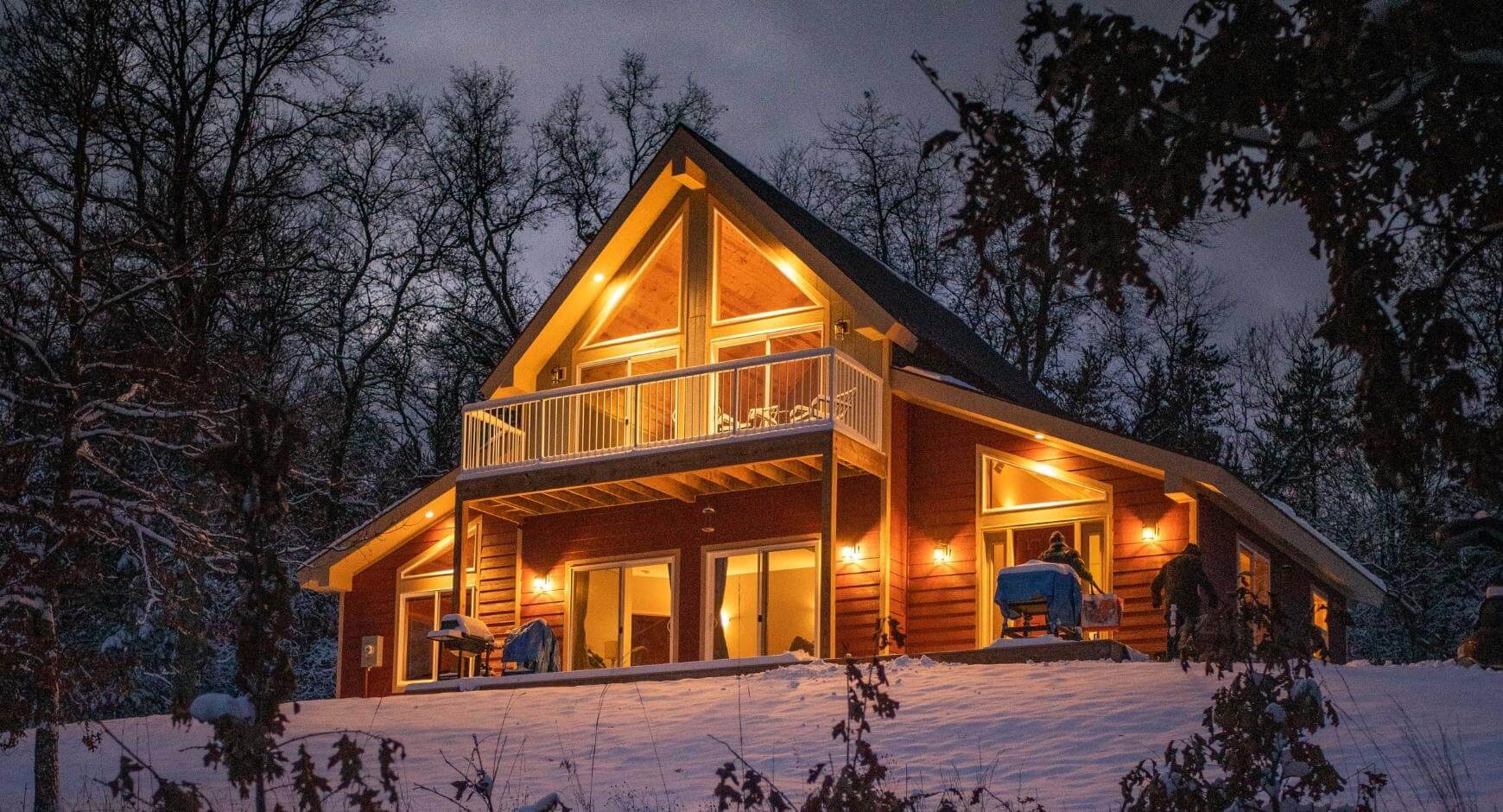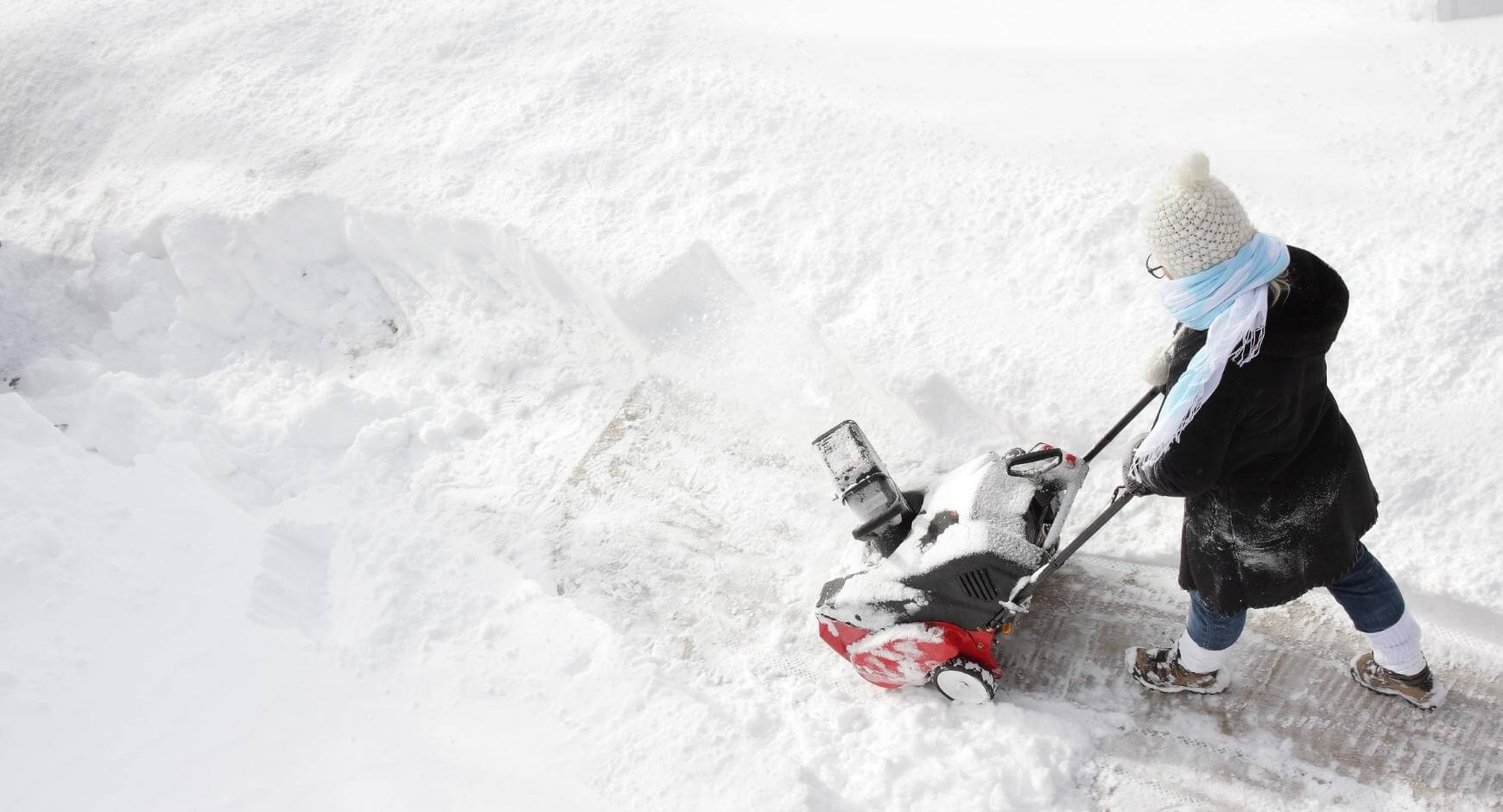Your home is your safe haven from the freezing temperatures and harsh weather that winter brings. Ensure it stays warm all winter long by completing a winterize-home checklist. It can be difficult to remember every winterization task. Make sure you check every box by winterizing your home with this list in hand.
Knowing how to properly winterize a house can help you avoid catastrophic issues, such as burst pipes. These weatherization tips for winter will ensure your house is sealed correctly so you and your loved ones stay warm and cozy no matter how low the temperatures get. Whether you’re winterizing a house yourself or hiring professionals, don’t wait until it starts to snow before you begin.


For more great home and property maintenance advice and tips, visit Asher’s blog.
Winter Readiness Checklist: Prep Your Home in 10 Steps
We’ve broken down how to winterize your home into ten basic tasks ranging from quick and easy inspections to thorough cleaning in some hard-to-reach areas. The entire checklist should take less than a week to complete so you can sit comfortably in your winterized home.
Not every house will require the same amount of work, so take a look at the checklist and see what fits the needs of your home. While you will need to know how to winterize your windows and doors, you may not have a fireplace or a jet ski. You can add or subtract elements on the list to create your official ‘winterize my house’ checklist.
- Keep the Cold Out of Your Windows
- Winterize Exterior Doors
- Ensure Your Roof and Gutters Are Winter-Ready
- Perform a Thorough Heating System Check
- Winterize Summer Toys and Equipment
- Prepare Your Outdoor Winter Equipment
- Protect Your Water Pipes
- Safeguard Outdoor Furniture Against the Elements
- Winterize Your Air Conditioner
- Check Your Fireplace and Chimney

Keep the Cold Out of Your Windows
Winterizing windows is all about creating a tight seal along the border to keep the cold air out. There are a few different ways to winterize your windows that may involve weatherstripping, foam tape, or caulk.
If your window panes themselves are letting in cold air you can use insulated curtains or plastic wrap to help reduce heat loss before getting a window replacement. Installing insulated replacement windows is truly the best way to winterize windows, as you can avoid the ugly foam or plastic borders.
If you’re wondering how to winterize windows and in need of a quick fix, try one of these options:
- Weatherstripping
- Foam tape
- Re-caulking

Winterize Your Exterior Doors
The small air leaks around your doors and windows can contribute significantly to your heating bill. You can minimize these gaps by replacing any faulty caulking or worn-out weatherstrips. Check for air leaks by feeling around the doors for incoming air and sealing it with the appropriate tools, or for sliding glass doors try one of these methods.
Depending on the exposure of your exterior doors you may also want to consider installing a storm door. These additional exterior doors provide another layer of protection from the elements and can extend the lifespan of your main doors.
If you’re struggling with a cold draft coming through the entryway, try one of these methods:
- Weatherstripping
- Re-caulking
- Install a storm door

Ensure Your Roof and Gutters are Winter-Ready
A quick inspection of your roof, either by yourself or a hired professional, will ensure that your shingles, flashing, and gutters won’t be damaged by the build-up of snow and ice. Look for missing or damaged shingles and have them replaced. Check the flashing around the chimney and other roof vents, as these are a common source of leaks as well.
When checking your gutters make sure they are clean and free of debris like leaves that could cause clogs. Clogged gutters can cause ice dams, which are difficult and costly to remove once they’ve formed.
Once you’ve found a good day to get up on the roof, make sure you remember these three things:
- Look for missing or damaged shingles
- Inspect flashing around roof projections
- Clear gutters of any debris left behind

Perform a Thorough Heating System Check
Your heating system is your greatest ally against the cold, so make sure it’s in top shape. Take it on a test run at least a month before the cold hits so you have time to make any unforeseen repairs. You should then check the fuel supply if your furnace runs on propane or another fuel source.
Take a moment to clean the heating vents and replace the air filter to ensure you have clean air circulating in your house. Lastly, double-check that your carbon monoxide detector is working as a small leak could create a very dangerous situation.
Once again, the key points of a thorough heating system check are:
- Test run a month in advance
- Clean vents and replace the air filter
- Check your carbon monoxide detector

Winterize Summer Toys and Equipment
A commonly missed step on the winterize your house checklist is to winterize all of the summer equipment stored in your garage. Gardening tools such as mowers and string trimmers need to be cleaned and maintained so they can start up quickly in the spring.
Summer toys like boats, jet skis, and dirt bikes also need to be properly cleaned and stored to avoid dead batteries and old gas causing you problems in the next year.
If you have any of these items at home, keep them in mind come wintertime:
- Mowers and string trimmers
- Boats and jet skis
- Motorcycles and dirt bikes

Prepare Your Outdoor Winter Equipment
How do you winterize a house without first checking all the equipment you’ll need to maintain it through the winter? If you have a snowblower, it’s best to inspect it before the first snowfall to ensure it works when you need it.
If you’re getting ready to break out your fun winter toys like snowmobiles and ice augers then you’ll want to inspect those as well. Nothing is worse than needing to order a couple of spark plugs when a foot of snow just hit the ground.
Knowing how to winterize the following equipment will come in handy:
- Snowblower
- Snowmobile
- Ice auger

Protect Your Water Pipes
Living in cold climates means your water pipes are exposed to temperatures that drop below freezing. Water inside can freeze and expand, causing your pipes to burst, which is one of the most costly repairs in any home. Inspecting the plumbing in your home is an important part of how to properly winterize a house.
If you have any exposed pipes in an uninsulated part of your home like the attic or crawlspace, you can wrap them in electrical tape and foam to insulate them. Your exterior faucets will remain exposed so you’ll need to shut off their water supply and drain them by opening up the faucets. This is also a good time to drain your garden hoses and store them.
Protect your home from costly damage by following these three steps:
- Insulate exposed pipes
- Drain exterior faucets
- Know where your water shut off is

Safeguard Outdoor Furniture Against the Elements
Winter will take a toll on anything that’s left outside. You can protect your outdoor furniture and gear by covering them in a tarp to keep off the snow and freezing rain. If you have space in your attic you may want to bring the furniture up there for added protection.
The best tips for winterizing your home are seldom the ones we think of first. Taking the time to move your furniture will greatly increase its lifespan and keep it looking like new for next summer. This tip extends past furniture to grills, swings, and any equipment you won’t be using for the next several months.

Winterize Your Air Conditioner
The air conditioner is another often neglected or forgotten item on the home winterization checklist. Cleaning the unit of debris with a high-pressure hose is the best way to get rid of leaves and dirt that can contribute to rusting and freezing of internal parts. You should let it dry out completely then cover it with a waterproof tarp to extend its life and performance.
If you have a window air conditioner you should consider removing it to prevent cold air from getting in through the vents. If you can’t remove it then closing the vents and covering it with a similar tarp is the best way to create a good seal.
Check Your Fireplace and Chimney
While some may be using their fireplace all year long, there are a few things you should check before winter sets in. The warm weather may have blinded you to any cold air leaks coming from the chimney, but it is one of the major sources of leaks in any home.
You should first check the damper to ensure that it can be fully closed or opened with no obstructions. Fall is the time of year for small animals to build their nests in these warm spaces. If you do need your chimney cleaned, it’s best to call a professional.
Additional Emergency Weatherization Tips for Winter
In addition to how to winterize a house, you should know how to winterize your vehicle. The first thing you’ll want to do is look into getting snow tires if your tires are wearing thin or made specifically for summer roads.
You should also inspect your car for leaks similar to how you winterize your house. Then simply take your home winterization supplies and load them in your trunk for emergencies.
There are a number of excellent kits available, but check out this list for the essentials:
- Extra blanket, hat, and gloves
- Ice scraper
- Collapsible shovel
- Flashlight
- Tow rope
- Battery cables

Explore Asher’s Blog for More Seasonal Maintenance Tips
We hope this checklist has helped to guide you through how to winterize your house. In our experience, we’ve learned that any cold weather tips for your home are worth their weight in gold. If you’ve made it through this list and found you need new windows, doors, or gutters, don’t hesitate to give us a call.
At Asher, we are in the business of arming our customers with the best home exterior products on the market. Learn more about our top-notch products and services, or browse our blog for more great home maintenance tips and advice.

